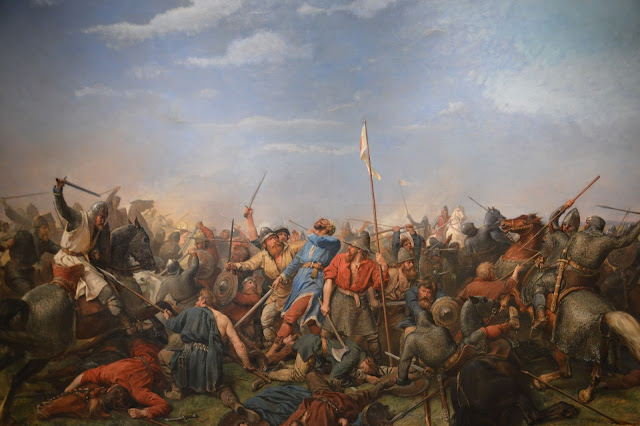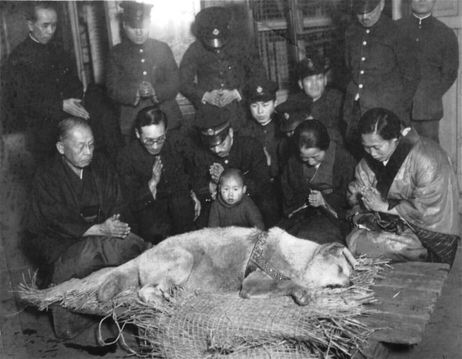In January of 1066, the King of England, Edward the Confessor, died. He had become withdrawn and indecisive in his latter days, which led to three separate claims on the English throne: Harold Godwinson (who was crowned), Harald Hardrada of Norway, and William, the Duke of Normandy. All three had fairly legitimate claims to the throne, but Harold got to it first.
Not to be deterred, both Harald Hardrada and William assembled expeditionary forces and planned an invasion of England. Hardrada was faster (maybe because he was a Viking). With 300 ships and about 9,000 men, he landed in the north and quickly took the city of York. Unfortunately for him, he underestimated Godwinson's resolve.
Harold (with an O) raced north, gathering an army along the way, and caught Harald (with an A) unaware at
Stamford Bridge in September. The element of surprise was present to the extent that about a third of the Norwegian army only showed up after the rest of them were in full rout. Of the 300 ships that came to England, only 24 returned to Norway, and none of them carried Hardrada.
 |
| That's him in the blue. He just got a new neck piercing. Ill-advised, as it turns out. |
Harold Godwinson felt pretty good about that victory. For all of three days. In his furious march north, he had brought with him most of the levies that were meant to defend the south from William, which meant that when William landed there was pretty much no opposition. He built a small wooden castle at Hastings and started raiding the surrounding countryside.
After a grueling march and gruesome battle, Harold once again drove his forces across the country to meet an invader. Many of the details are unclear, but it appears that he favored speed over replenishing his forces. By the time he reached Hastings, his men were exhausted and battle-weary, and Norman scouts had spotted them, eliminating the element of surprise.
 |
| And coffee wouldn't even reach England for another several centuries! |
Even so,
the battle was far from one-sided. The English set up defensively on a hill, and the Normans repeatedly failed to dislodge them. At some point, a rumor started that William had been killed. Norman soldiers began to panic and run, which was ironically the spark that led to their victory. Foreign butts were mighty tempting to English swords, so the warriors holding them started breaking formations to reach them.
When William turned out to be alive -- and noticing the buttstabby lack of discipline -- he started using fake routs to shake loose the shield walls. While this didn't get the English off the hill, it did get them to expose their flanks, to which the Normans applied a liberal amount of charging horse. Things cascaded from there. the cavalry charge opened a path toward the King and his retinue, which led to the King's death, which sent the English into a full panic and essentially ended the battle right then and there.
 |
| And look! There were only like six of them! |
Two months later, the Duke of Normandy was crowned King of England and given the name William the Conqueror. There were a few years of resistance but after Hastings England simply couldn't muster the strength to shake off the Norman Invasion. The consequences were
staggering. The English aristocracy was systematically and
thoroughly wiped out, replaced by William's vassals. Massive waves of refugees left England and settled elsewhere in Europe.
Even the English
language was effectively destroyed by the Norman invasion. The kings of England for centuries after the Norman invasion spoke an old form of French, which gradually merged with English into a new Anglo-Norman dialect. That brings me to one of my favorite little tidbits of tangentially related history: Richard the Lionheart, arguably the most iconic Medieval King of England,
never learned English.
 |
| And he certainly never learned a Scottish accent. |
The Battle of Hastings is one of those rare moments in history where a few small decisions have a clear and massive impact on the rest of history for centuries to come. It was the deciding battle in the
last successful invasion of England, almost a thousand years ago. It entirely
broke England, reshaping it into something completely different, which has not been done to such a violent and rapid extent since.
Holy shit.
"A small cup of coffee" by Julius Schorzman - Own work. Licensed under CC BY-SA 2.0 via Commons
"Sean Connery in Robin Hood: Prince of Thieves" by Warner Brothers. Licensed under Fair Use































